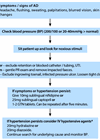Despite its first discovery predating the early-1940s, clinical application of the bulbocavernosus reflex (BCR) has been limited to date. The BCR traditionally involves contraction of the bulbo- and ischiocavernosus pelvic floor muscles, often referred to as the ‘bulbocavernosus muscle’, in response to stimulation of the glans penis or clitoris [1].

Figure 1: Ernest Bors [4].
Fascination surrounding the BCR grew most notably in 1946, largely due to the work of Ernest Bors (Figure 1), however the true pioneer remains unknown. Bors, a US-based urologist who specialised in spinal cord injury (SCI) in war veterans, was interested in the reflex arc given the poor prognosis of advanced stage neurogenic bladder amongst this cohort [2]. Bors modified the BCR in 1952; measuring external anal sphincter contraction in response to glans penis / clitoris stimulation [3].
Anatomy
In males, the BC is located at the base of the penis and in females it forms the vaginal sphincter [5]. The BCR is an oligosynaptic reflex arc composed of pudendal nerve fibres and is associated with sacral segments S2-4 in the spinal cord [3]. Stimulation of the BC results in compression and ventral motion of the bulb of the penis and constriction of the vagina. Contraction of these pelvic floor muscles also occurs during ejaculation [5-7].
Subcutaneous Pacinian corpuscles detect the pressure change that results from squeezing the glans penis / clitoris and transmit a sensory nerve impulse along the dorsal nerve, the deepest division of the pudendal nerve. This impulse is detected by the first-order neurones situated in the dorsal root ganglion of the spinal nerves S2-4. The impulse then passes along a short interneuron within the grey matter of the spinal cord and stimulates motor neurones of the BC and external anal sphincter muscles, located in the spinal nerve ventral root. Onuf’s nucleus (origin of the pudendal nerve) located within the grey matter of the S2 segment ventral horn, contains motor neurones that supply the BC. Efferent nerve fibres then transmit the motor signal to the effector muscles along fibres of the deep perineal branch of the pudendal nerve [3,5].
Technique
It is essential that the patient remains relaxed and adopts a supine position during examination, as standing and / or bending at the waist increases pelvic floor muscle tone which significantly reduces the likelihood of the BCR being elicited [1]. The glans penis in a male, or clitoris in a female, is compressed firmly between the thumb and index finger, activating the reflex arc and resulting in contraction of the BC and external anal sphincter muscles. The latter effector response is detected by placing the index finger inside the distal aspect of the anal canal and palpating for contraction of the external anal sphincter. The BCR can also be elicited by bladder filling and gentle pulling on an indwelling Foley catheter, compressing the retention balloon against the bladder neck [8]. Successfully identifying contraction in the BC alone, is often difficult to achieve hence the reason many clinicians opt to examine for contraction in the external anal sphincter. There is no requirement to have two or more examiners present, other than for the purposes of a chaperone, however the test is often more accurate if two individuals are examining; one to stimulate the glans penis / clitoris and one to assess for external anal sphincter contraction.
The glans penis / clitoris should not be squeezed at a rate greater than once every four seconds, as this is necessary to ensure that the reflex arc components have become unstimulated [3]. Additionally, the muscle contraction may be subtle and there are a number of precautions that should be addressed prior to starting the examination, in order to maximise the chances of achieving a desired response. These include ensuring the patient is comfortable and pain free, as the muscle contraction will not be palpable if the sphincter muscles have already occupied a contracted state. This has been accounted for by more modern approaches such as utilisation of electromyographic (EMG) studies. During EMG studies, stimulating needle electrodes and recording needle electrodes are inserted into the BC and external anal sphincter muscles, respectively. A nerve impulse is generated by the stimulating electrode and travels along the afferent and efferent pudendal nerve pathway (as described above). The recording electrodes then measure the muscle contraction potentials. An abnormal BCR finding is widely defined as either an absent BCR or a reflex latency of greater than 45 milliseconds [9-11].
Significance of presence or absence
As highlighted by Lapides, the BCR can potentially be used as a surrogate marker of sacral plexus function. Lapides reports on a case in which a patient, largely neurologically intact on admission but with an absent BCR, later develops voiding symptoms. Imaging was performed due to this negative finding, which revealed lumbosacral disc herniation from L5-S1. An emergency discectomy was performed and there were no voiding abnormalities postoperatively. Remarkably, the BCR was re-examined several days after surgery and found to be present. In this case, assessment of the BCR was vital in providing instant objective evidence that there was sacral cord dysfunction [3].
There is scope for the BCR to be used as a screening test for location of a lumbo-sacral spinal cord lesion, as it is typically absent in conus medullaris pathologies (affect S2-5) and present in epicondus pathologies (affect L3-S1) [5]. Identification of spinal cord pathologies is beneficial in guiding therapeutic intervention for bladder, bowel and erectile dysfunction [12].
However, as Bors suggests, caution should be taken when drawing conclusions about the apparent absence of a single reflex arc such as the BCR in relation to spinal cord function. This is largely due to the fact that supraspinal centres govern reflex activity. Bors went on to refute the work of his critics such as Rattner, suggesting that their negative BCR findings were due to pain being elicited during the assessment; exteroceptive pain fibres are known to cut through the penile dorsal nerve and form the afferent limb of the BCR arc [1,10]. Additionally, the effector response in the modified BCR is known to be subtle on occasion and therefore easy to overlook [3]; an absent BCR must be validated by EMG studies.
Reliability
There is ongoing debate amongst clinicians regarding the effectiveness and reliability of using the BCR as a suitable test of sacral segment function. Rattner and colleagues failed to elicit the BCR in all 11 individuals included in their study, despite their subjects all being neurologically intact [10]. This finding has since been rejected, as it is likely that the pain elicited on assessment influenced the results [1]. Pierce and colleagues advocate routine assessment of the BCR in urological examination following their study findings; BCR successfully elicited in 13 out of 14 individuals with intact neurological function [13]. Given the likely variation in pressure applied by different clinicians when squeezing the glans and knowledge of pain being a confounding variable, assessment of the BCR using current practices may continue to provide inaccurate results. Future research should therefore aim to provide a means of applying a universally accepted standard amount of pressure that does not typically induce pain during squeezing of the glans.
A recent study performed by Calabrò and colleagues, weakens the reliability of using the BCR to screen for sacral cord function post injury, suggesting that the BCR is amenable to conservative measures and its presence does not necessarily exclude spinal cord injury. Study participants all had a prior diagnosis of spinal cord injury and presented with an abnormal BCR, however following intervention (muscle vibration therapy), the BCR latency of all participants improved to within target range. It is worth noting, study participants had no sacral cord involvement on presentation and still presented with an abnormal BCR [14].
It has been suggested that use of the BCR may allow for intraoperative neurophysiological monitoring (INM), however application of the BCR for INM remains anecdotal at best, as there are widely contrasting results in literature. Deletis showed the feasibility of using the BCR for INM, despite possible drawbacks such as its high susceptibility to general anaesthetic agents and inability of the BCR to identify damage to suprasegmental pathways associated with sphincter function [15,16].
Despite suggested advancements, BCR assessment has not been included in formal European Association of Urology (EAU), British Association of Urological Surgeons (BAUS) or American Urological Association (AUA) impotence guidelines at the time of writing this article. There is also a lack of inclusion in the International Society for Sexual Medicine (ISSM) or European Society for Sexual Medicine (ESSM) guidelines.
References
1. Bors E, Blinn KA. Bulbocavernosus reflex. J Urol 1959;82(1):128-30.
2. Lanska DJ. Historical perspective: Neurological advances from studies of war injuries and illnesses. Ann Neurol 2009;66(4):444-59.
3. Lapides J. Diagnostic value of bulbocavernous reflex. J Am Med Assoc 1956;162(10):971.
4. Richman M. Dr Ernest Bors. U.S. Department of Veterans Affairs [Internet] 2020
https://www.research.va.gov/
researchers_whoserved/Ernest_Bors.cfm
[accessed 22 September 2022].
5. Kesserwani H. Difficulty standing on the tiptoes? think of an epiconus syndrome: a case report and a review of the pathobiology of the conus and epiconus. Cureus 2021;13(1):e12724.
6. Stafford RE, Coughlin G, Lutton NJ, Hodges PW. Validity of estimation of pelvic floor muscle activity from transperineal ultrasound imaging in men. PLoS One 2015;10(12):e0144342.
7. Hilz MJ, Marthol H. Erektile Dysfunktion? Wertigkeit neurophysiologischer Diagnoseverfahren. Der Urologe A 2003;42(10):1345-50.
8. Blaivas JG, Zayed AAH, Labib KB. The bulbocavernosus reflex in urology: a prospective study of 299 patients. J Urol 1981;126(2):197-9.
9. Lavoisier P, Proulx J, Courtois F, de Carufel F. Bulbocavernosus reflex: its validity as a diagnostic test of neurogenic impotence. J Urol 1989;141(2):311-4.
10. Rattner WH, Gerlaugh RL, Murphy JJ, Erdman WJ. The bulbocavernosus reflex: I. electromyographic study of normal patients. J Urol 1958;80(2):140-1.
11. Shinjo T, Hayashi H, Takatani T, et al. Intraoperative feasibility of bulbocavernosus reflex monitoring during untethering surgery in infants and children. J Clin Monit Comput 2019;33(1):155-63.
12. Previnaire JG. The importance of the bulbocavernosus reflex. Spinal Cord Ser Cases 2018;4(1):2.
13. Pierce JM, Roberge JT, Newmann MM. Electromyographic demonstration of bulbocavernosus reflex. J Urol 1960;83(3):319.
14. Calabrò RS, Naro A, Pullia M, et al. Improving sexual function by using focal vibrations in men with spinal cord injury: encouraging findings from a feasibility study. J Clin Med 2019;8(5):658.
15. Sala F, Kržan MJ, Deletis V. Intraoperative neurophysiological monitoring in pediatric neurosurgery: why, when, how? Child’s Nervous System 2002;18(6-7):264-87.
16. Deletis V, Vodusek DB. Intraoperative recording of the bulbocavernosus reflex. Neurosurgery 1997;40(1):88-93.
TAKE HOME MESSAGE
-
The BCR is an oligosynaptic reflex arc composed of pudendal nerve fibres, which when activated results in contraction of the BC and external anal sphincter as effector responses.
-
As exteroceptive pain fibres cut through the penile dorsal nerve, pain elicited during BCR assessment may result in false negative findings.
-
The BCR effector response can be subtle and therefore easy to overlook; an absent BCR should only be diagnosed if EMG studies have been performed.
-
It has been suggested that the BCR can be used during neurological assessment as a surrogate marker of sacral plexus function, however the reliability of this has been called into question.
-
Application of the BCR for INM remains anecdotal at best, with possible drawbacks including its high susceptibility to general anaesthetic agents.
-
BCR assessment has not been included in any national or international urological evidence-based guidelines.









